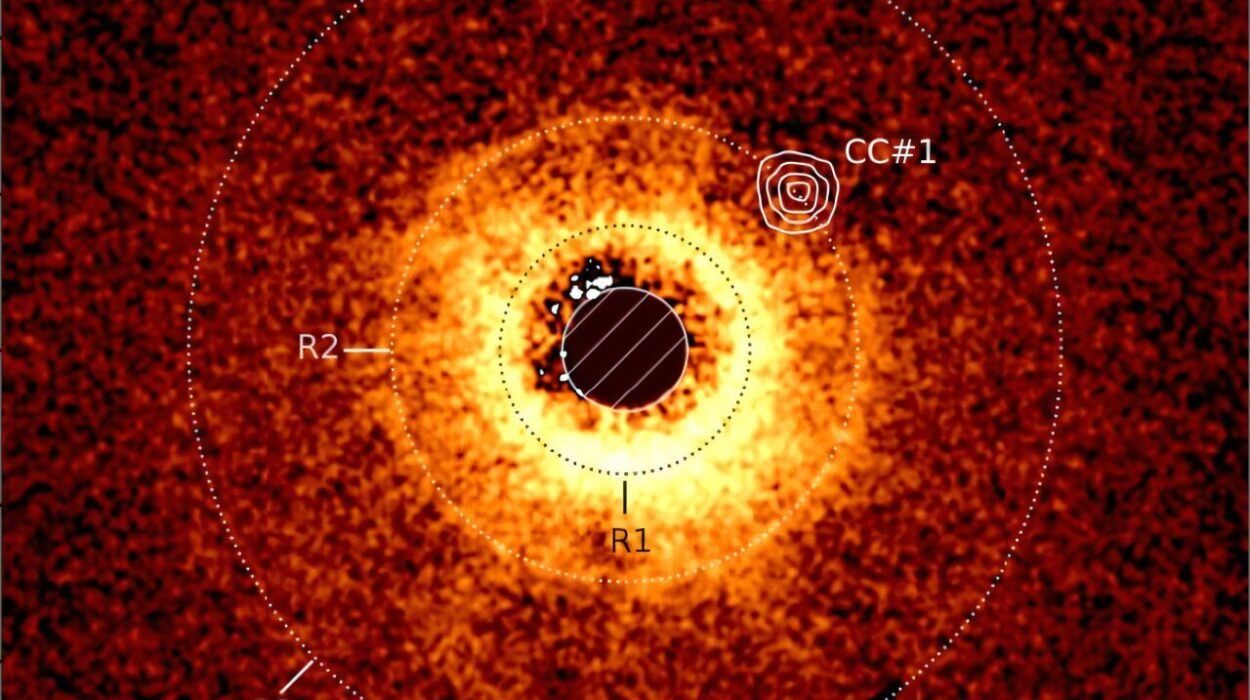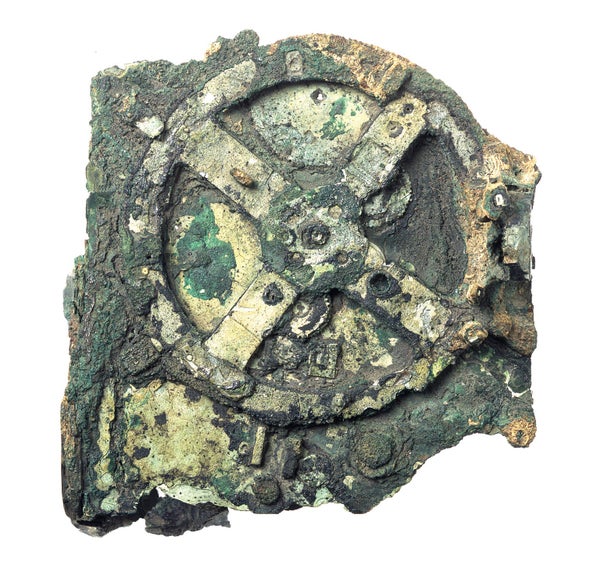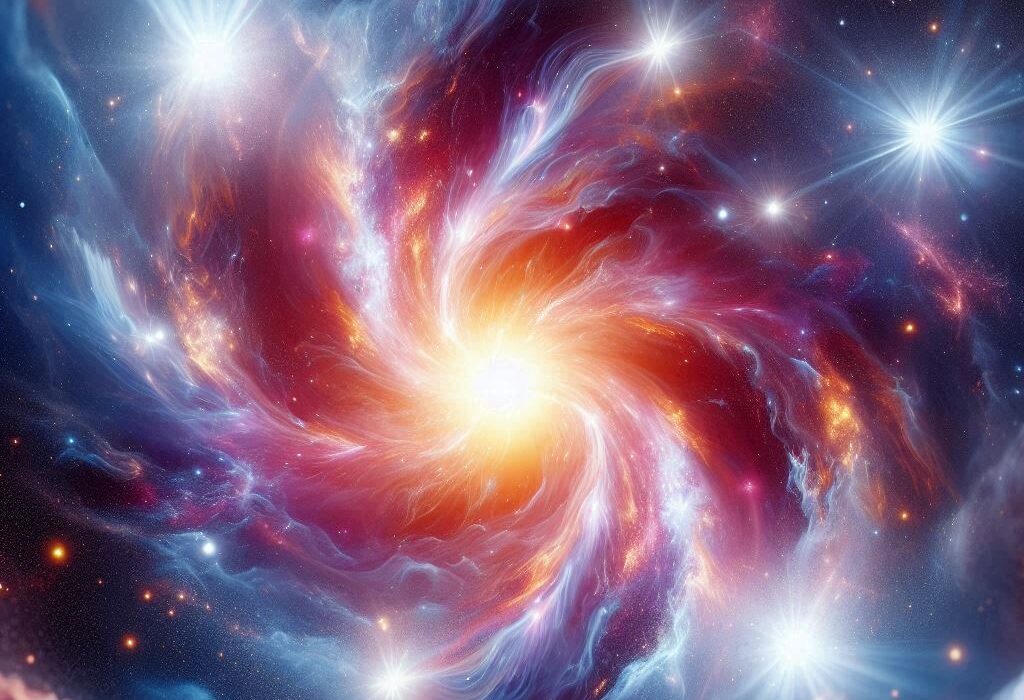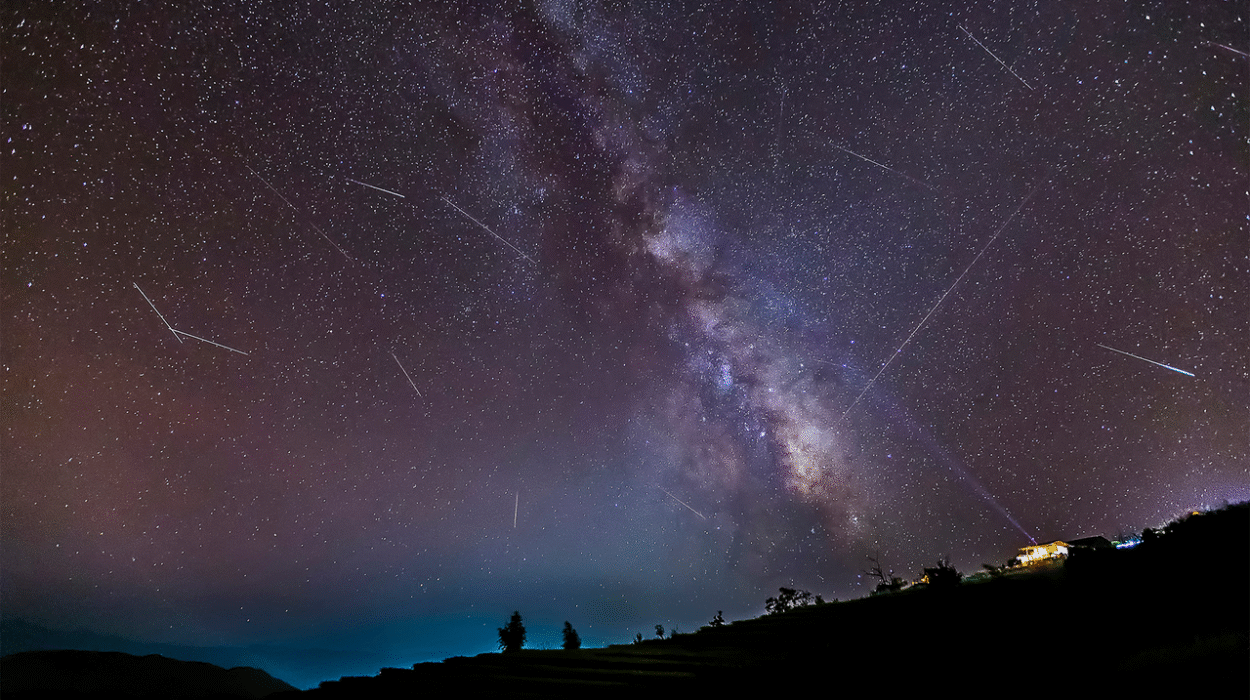Far beyond the familiar twinkling lights we see in the night sky, in a distant corner of the universe, a team of European astronomers has uncovered a new and fascinating chapter in the tale of the TOI-1422 planetary system. About 500 light years away from Earth, a star known as TOI-1422, a cousin of our own Sun, plays host to two strange and unusual exoplanets. The most recent discovery: a world that defies expectations. This newfound exoplanet, designated TOI-1422 c, is both massive and peculiar—a stunning find that reshapes our understanding of how planets can form and evolve.
The discovery, detailed in a research paper published on November 14, reveals a planet that is nearly three times larger and about 14 times more massive than Earth. It’s not every day that scientists stumble upon such an extraordinary world, and yet, here it was—a mysterious giant in the relatively quiet orbit of TOI-1422, a star that had already been suspected of hosting one planet. But what about a second one?
The First Glimpse of TOI-1422’s Hidden World
For years, astronomers had been studying TOI-1422, a star that seemed to hold a secret. This particular star is relatively similar to our Sun—about 4.6 billion years old, with an effective temperature of around 5,811 Kelvin. It’s a G-type star, much like the one that powers our solar system. But as astronomers watched it more closely, they began to suspect that something more was hiding in the depths of its gravitational reach.
In previous observations, they had already identified TOI-1422 b, a warm Neptune-sized planet orbiting the star in about 13 days. But a second planet seemed to be lurking just beyond the reach of their instruments. At first, it was just a hunch, a whisper of a possibility, with estimates suggesting an orbital period of 29 days. This second planet had the potential to reveal even more about how planets form around stars, and scientists were eager to confirm their suspicions.
It wasn’t until a team of astronomers, led by Luca Naponiello of the Observatory of Turin, Italy, dug into the data from NASA’s Transiting Exoplanet Survey Satellite (TESS) and combined it with radial velocity measurements, that the mystery was solved. Their work revealed that, yes, the second planet was real. And not only that—it was far stranger than they had imagined.
A Giant in the Making
TOI-1422 c is a world that doesn’t follow the typical patterns seen in other multiplanetary systems. While many systems show a clear trend where planets closer to their star are smaller and less massive, TOI-1422’s planets break that mold in a surprising way. The newly confirmed planet, which orbits its star once every 34.5 days (a little longer than initially estimated), is nearly 50% more massive than its inner neighbor, TOI-1422 b. The exoplanet has a radius of 2.61 times that of Earth, but what really sets it apart is its weight—14 times the mass of Earth.
In fact, TOI-1422 c is what scientists call a sub-Neptune exoplanet. This means it is smaller than Neptune but still much larger and more massive than Earth. With a density of 4.3 grams per cubic centimeter, this planet is made up of materials much denser than Earth, which contributes to its hefty mass despite being smaller than its inner counterpart. The planet’s surface is likely very hot too, with an estimated equilibrium temperature of 628 Kelvin—well over 300°C.
What makes this discovery even more striking is the way TOI-1422 c behaves in comparison to its sibling, TOI-1422 b. “In contrast to the widely observed trend in multiplanet systems, where planet mass and radius tend to decrease with orbital period (or at least density remains constant or decreases), this system exhibits the opposite pattern,” the researchers note. In other words, TOI-1422 c, the outer planet, is more massive, yet smaller, than the inner planet. Such an “anti-ordered” or “mass/density-inverted” arrangement is rare in the universe, making TOI-1422 c’s discovery all the more intriguing.
Could There Be More?
As the team dove deeper into the data, another mystery emerged. They noticed significant variations in the transit timing of TOI-1422 b. This could suggest that something else is exerting gravitational influence over the inner planet, but it’s not the second planet they’ve just confirmed, TOI-1422 c. The irregularities could be the result of another planet—one that hasn’t yet been detected. “We observe significant transit timing variations (TTVs) for TOI-1422 b, which could indicate the presence of an additional planet,” the researchers wrote in their study.
The possibility of a third planet in the system is exciting, but it’s still a hypothesis at this point. To confirm it, astronomers would need to carry out even more precise measurements, including additional photometric observations and extreme-precision radial velocity tests. The hunt for another planet in the TOI-1422 system is just beginning, and the mystery of its gravitational interactions may hold the key to further unlocking the secrets of this strange system.
Why This Discovery Matters
TOI-1422 c is more than just another exoplanet discovery—it’s a window into a planetary system that defies our expectations. The study of such systems is crucial for understanding the diversity of planets that exist in the universe. Not every planet follows the same rules, and TOI-1422 c challenges some of the patterns that scientists thought were universal.
For one, it forces astronomers to reconsider the relationship between planet size, mass, and orbit. In most systems, larger planets are found farther from their stars, with smaller planets occupying the inner regions. But in the TOI-1422 system, this rule is turned on its head. The discovery of TOI-1422 c suggests that there are still many hidden dynamics at play in planetary formation—dynamics that we don’t fully understand yet. This could have profound implications for how we study the origins of planets, not just in our own solar system, but around other stars as well.
Moreover, the potential discovery of a third planet opens up even more possibilities for study. If confirmed, it would add yet another layer of complexity to the TOI-1422 system, offering a rich case study in planetary formation and orbital mechanics.
As the search for planets continues across the galaxy, discoveries like this remind us just how much there is still to learn about the universe. TOI-1422 c is an extraordinary find, not just for its size or composition, but for the way it challenges everything we thought we knew about how planets interact in multiplanetary systems. With new tools, fresh data, and ongoing curiosity, astronomers are bound to continue unveiling even more mysteries, one distant world at a time.
More information: L. Naponiello et al, A 34.6-day transiting sub-Neptune in the TOI-1422 planetary system, arXiv (2025). DOI: 10.48550/arxiv.2511.11492






